Science
Frogs and Toads Together: Why do Amphibians Group Up?April 11, 2025

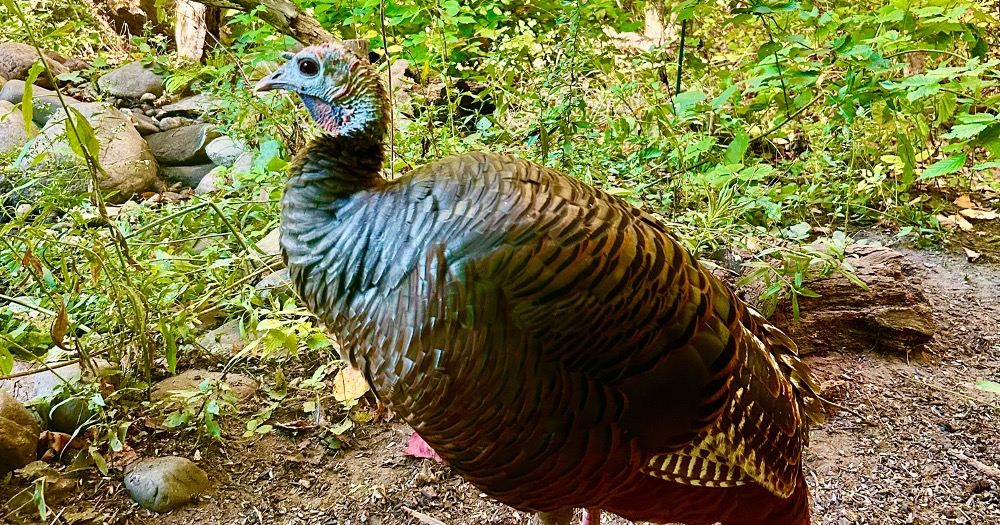
Talking about turkey facts is a regular occurrence in classrooms come November in the United States. But do you have the facts to keep your kiddos interested? I have uncovered answers for you for 10 of the most searched terms about wild turkeys. If you want to talk about turkey facts with your students this year, this is the list for you. Check them out!
Turkeys are birds and have characteristics similar to other birds including feathers, wings, and vertebrae. Turkey characteristics also include laying eggs and being warm-blooded, meaning they make their own heat from the food that they eat. However, turkeys are unique from other birds by their size, weight, and compact bones. Wild turkeys are the largest land dwelling birds in North America. Males can grow to be up to 24 pounds with females weighing up to 13 pounds.
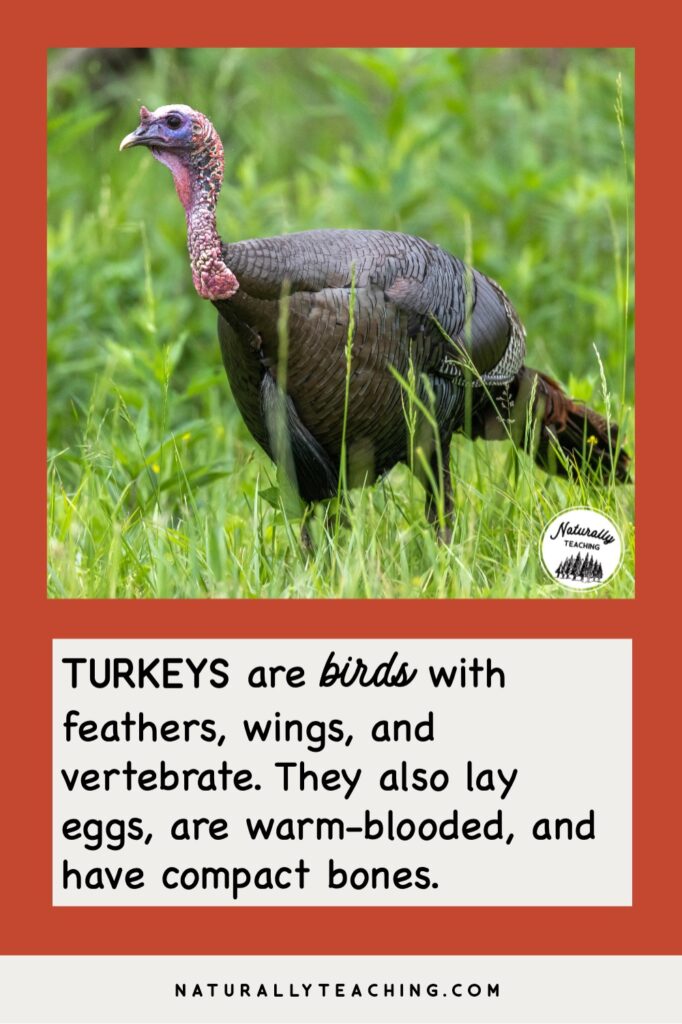
According to All About Birds, if needed, wild turkeys CAN swim! They tuck their wings in close to their bodies, spread their tails wide, and kick their legs. What a sight that would be!
It’s easy to tell a wild turkey vs domestic turkey because they have very different looks and abilities. Wild turkeys sport brown feathers that help them camouflage in nature while domestic turkeys don white feathers to camouflage on the carcass if missed by the butcher.
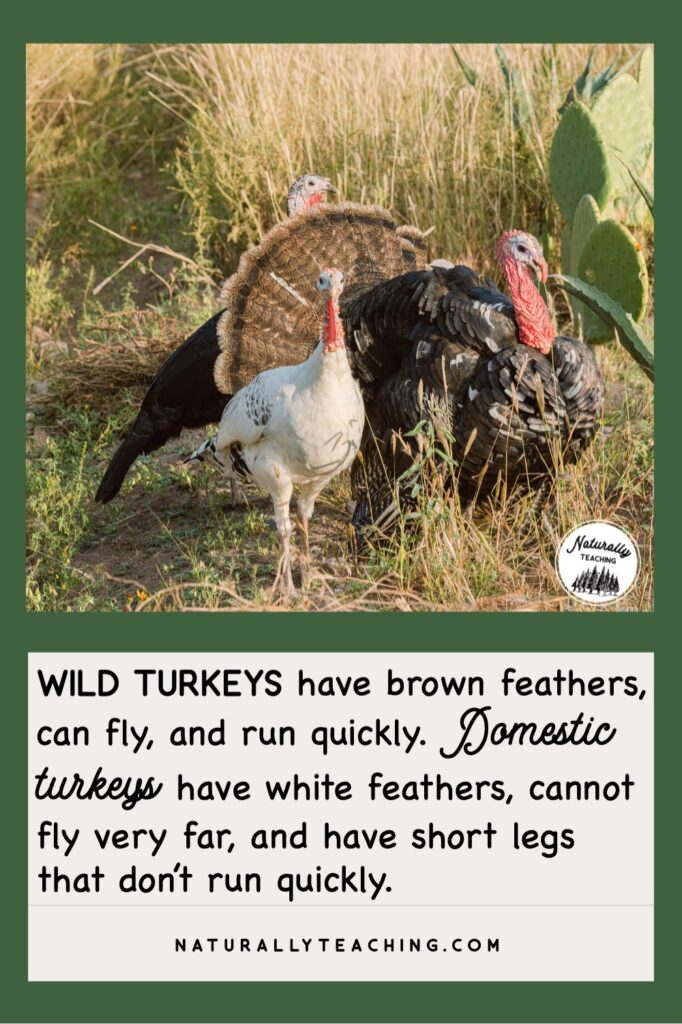
Wild turkeys are also able to fly up to a mile and can even fly up to 55 mph when needed. They can also run really quickly. Domestic turkeys have been bred to have broader breasts and to be heavier for the sake of good cooking; these characteristics make it so they cannot fly. They also have shorter legs that keep them from running quickly.
During the spring, aka mating season, flocks are made of males and females. When it’s no longer mating season, males tend to make their own all-dude flock.
During summer and early fall, mixed flocks are composed of several hens and their babies. When winter hits, multiple mixed flocks come together and can reach up to 200 turkeys!
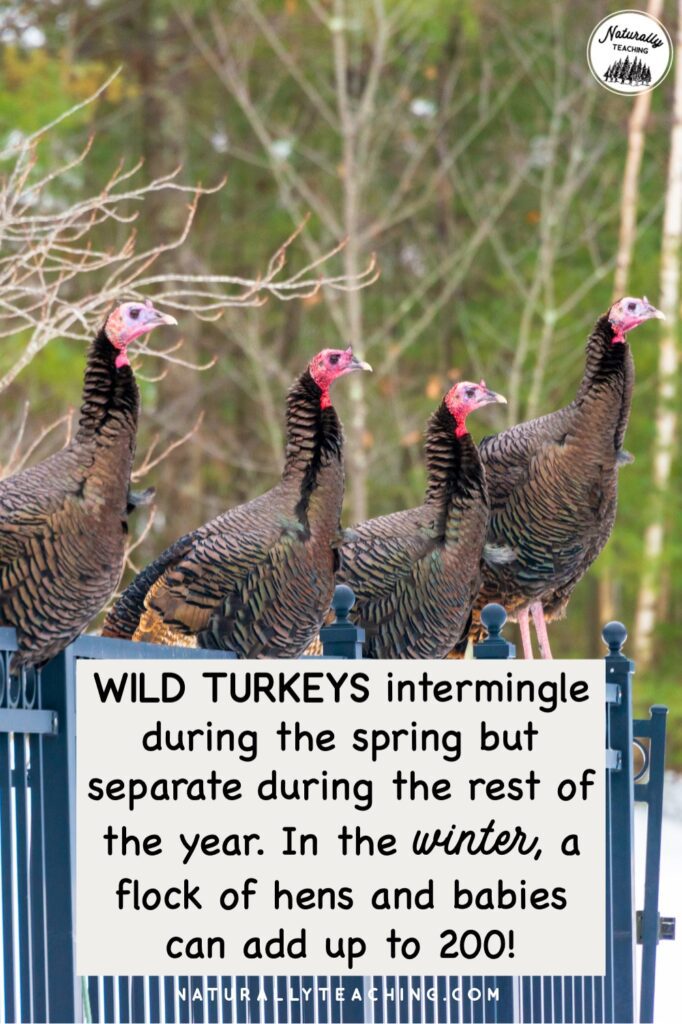
Like other animals, turkey needs include food, water, shelter, and space. Turkeys are omnivores and eat both plants and animals. They enjoy insects, seeds, and fruits. They also eat grit to help them digest their food.
Turkeys use leafed trees for shelter during the late spring, summer, and early fall. They also use needled trees for shelter during the year, especially during the winter. How do they get into the trees? Turkeys actually fly and roost in trees to sleep.
Wild turkeys live in woodlands and fields bordering woodlands. Forests have the types of food they enjoy such as nuts, berries, and insects. They also have trees for the turkeys to sleep in at night to avoid predators. Turkeys live in 49 of the 50 states of the United States of America, excluding Alaska.
Wild turkeys build their nests on the ground in the leaf litter of forests or under shrubs. The female uses her big feet to scratch a small dent in the dirt about 1 inch deep and about a foot wide. She then uses dead leaves and other plant parts to make her ground nest.
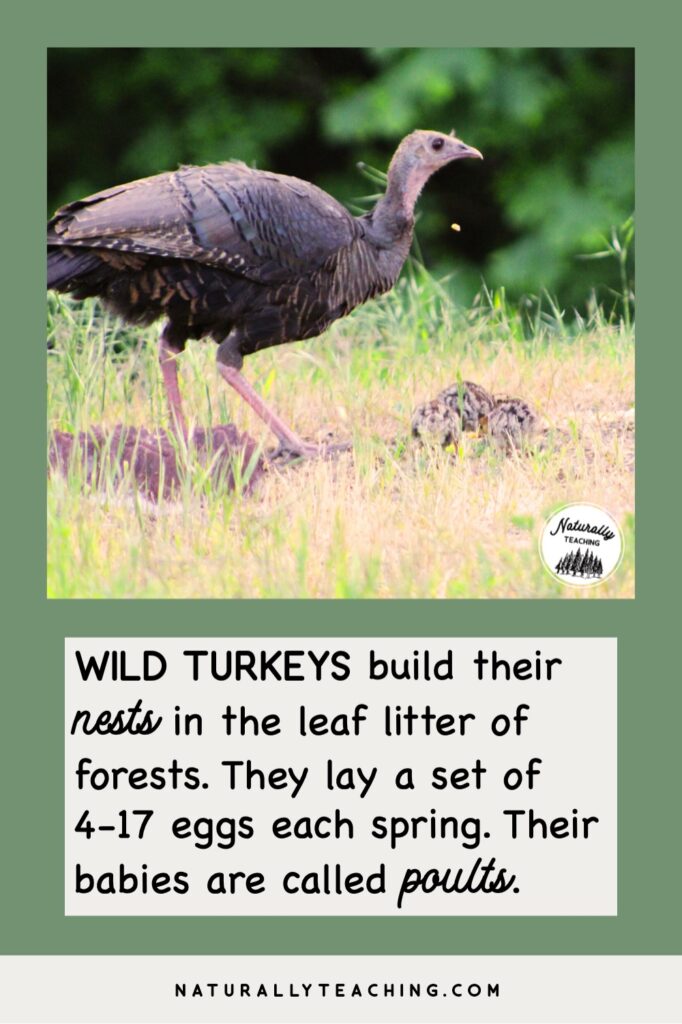
Wild turkeys lay a set, or clutch, of 4-17 eggs each spring. The young, or poults, only stay inside the nest for 1 day before they follow their mom around to start foraging for food.
Turkeys play an important role in the food web of nature. Their eggs are food for raccoons, opossums, striped skunks, gray foxes, woodchucks, rat snakes, bull snakes, birds, and rodents. The poults and adults are food for many different animals including coyotes, bobcats, raccoons, mountain lions, Golden Eagles, Great Horned owls, and people.
Wild turkeys are protected as game birds in many states in the United States but are not protected by the Migratory Bird Treaty. This means that they are able to be hunted but only during certain seasons.
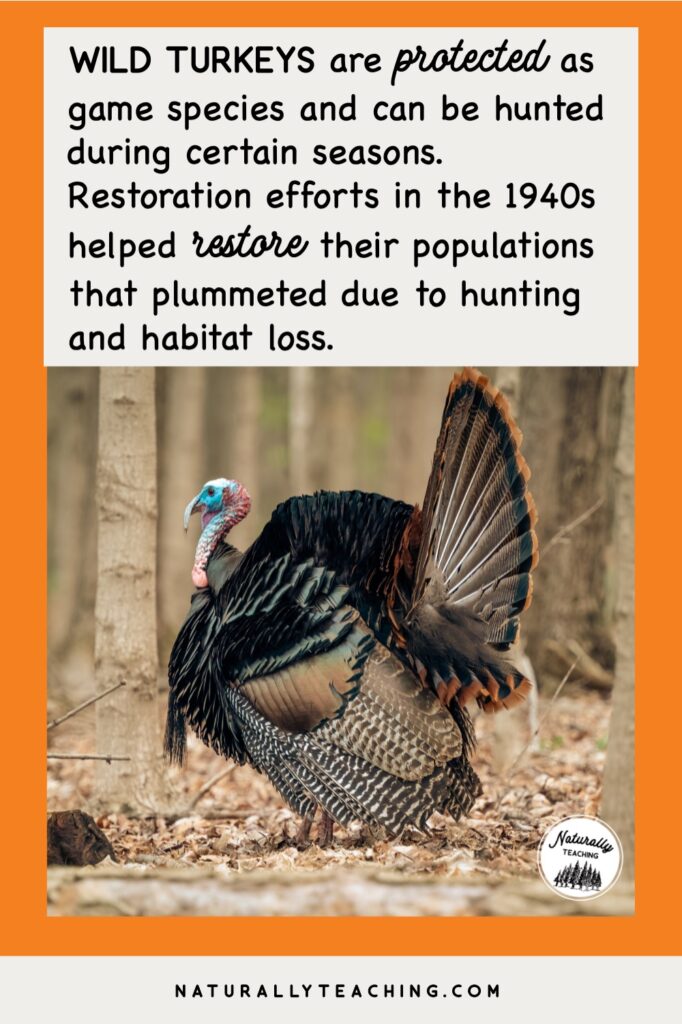
This protection policy came to be because their populations plummeted in the late nineteenth and early twentieth centuries due to hunting and habitat loss. There were a few subspecies that disappeared, but transplant restoration efforts in the 1940s helped to restore the populations.
Now there are an estimated 6.9 million breeding individuals globally, meaning that they are a species of low conservation concern. Way to go turkeys!
Hopefully this article brought answers to you about turkey facts that will help you in the elementary classroom this November. With the history of Thanksgiving being such a controversial issue, consider using these turkey facts to help you celebrate a bird that all of the continental U.S. has in common. If you are looking for a fun outdoor activity to help you celebrate turkeys, check out my Turkey Needs Outdoor Scavenger Hunt and get your wild kiddos outside this fall!
Bibliography
All About Birds. (n.d.) Wild Turkey. Retrieved from https://www.allaboutbirds.org/guide/Wild_Turkey/overview
Hoare, B. (1999). Turkeys. Danbury, Connecticut: Grolier Educational
South Carolina Department of Natural Resources. (2019, November 25). The Difference Between Wild and Domestic Turkeys. Retrieved from https://www.dnr.sc.gov/news/2019/nov/nov25_turkeys.php
Do you have any amazing experiences with talking about turkey facts in your classroom? Describe them in the comments section to inspire a fellow elementary teacher to take action!
Looking for alternative holiday celebrations for the elementary classroom? Check these out!
“How Do You Celebrate the Winter Solstice with Elementary Students?”
“16 Activities for Groundhog Day Inspired by the Book ‘Groundhog Weather School'”
One thought on “Talking About Turkey Facts: 10 Things to Know Before Thanksgiving”